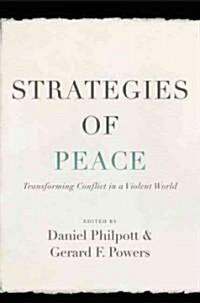
Building peace after war
- 개인저자
- Mats Berdal
- 발행사항
- Abingdon [England] ; New York : London : Routledge ; the International Institute for Strategic Studies, 2009
- 형태사항
- 215 p.: ill., maps ; 24 cm
- 총서사항
- Adelphi
- ISBN
- 9780415474368
- 청구기호
- 361.73 B486b
- 서지주기
- Includes bibliographical references
소장정보
| 위치 | 등록번호 | 청구기호 / 출력 | 상태 | 반납예정일 |
|---|---|---|---|---|
이용 가능 (1) | ||||
| 1자료실 | 00012955 | 대출가능 | - | |
- 등록번호
- 00012955
- 상태/반납예정일
- 대출가능
- -
- 위치/청구기호(출력)
- 1자료실
책 소개
The widespread practice of intervention by outside actors aimed at building ‘sustainable peace’ within societies ravaged by war has been a striking feature of the post-Cold War era. But, at a time when more peacekeepers are deployed around the world than at any other point in history, is the international will to intervene beginning to wane? And how capable are the systems that exist for planning and deploying ‘peacebuilding’ missions of fulfilling the increasingly complex tasks set for them?
In Building Peace After War, Mats Berdal addresses these and other crucial questions, examining the record of interventions from Cambodia in the early 1990s to contemporary efforts in Afghanistan and the Democratic Republic of the Congo. The book analyses the nature of the modern peacebuilding environment, in particular the historical and psychological conditions that shape it, and addresses the key tasks faced by outside forces in the early and critical ‘post-conflict’ phase of an intervention. In doing so, it asks searching questions about the role of military force in support of peacebuilding, and the vital importance of legitimacy to any intervention.
Berdal also looks critically at the ways in which governments and international organisations, particularly the UN, have responded to these many challenges. He highlights the pivotal role of politics in planning peacebuilding operations, and offers some sober reflections on the future prospects for post-conflict intervention.
The widespread practice of external intervention aimed at building ‘sustainable peace’ within societies ravaged by war and violence has been a striking feature of the post-Cold War era. This book examines the record of such interventions, from Cambodia in the early 1990s to ongoing efforts in Afghanistan and the Democratic Republic of the Congo. It examines the variety of forms that these interventions have taken and identifies the sources of success and failure in individual cases. Although the book draws on a wide range of case studies, its overall approach to the subject is thematic and covers three major areas.
목차
Introduction; One: The Peacebuilding Environment; Two: Peacebuilding Operations and the Struggle for Legitimacy; Three: Organisational and Policy Responses to the Peacebuilding Challenge; Conclusion

